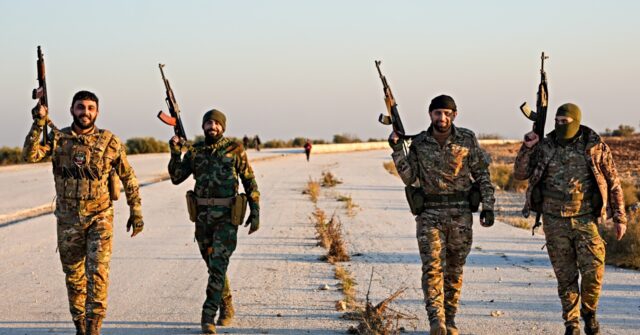The recent surprise attack on Aleppo, Syria, by the al-Qaeda-affiliated group Hayat Tahrir al-Sham (HTS) has reignited tensions in the Middle East, prompting the Iranian government, a long-established supporter of various militant groups, to blame Israel and the United States for the assault. An Iranian Foreign Ministry spokesman has asserted that Israel maintains a significant history and connection with HTS, despite the group’s strong jihadist roots and its critical role in organizing Sunni jihadist forces against the government of Bashar al-Assad since the onset of the Syrian Civil War in 2011. The longer conflict saw a reduction in active fighting, but the recent resurgence of HTS in Aleppo marks a noteworthy change in the ongoing dynamics of both regional governance and conflict.
Since the Syrian Civil War’s peak around 2017, the country has emerged into a state of fragmented governance where various factions control different regions. The Assad regime remains the most influential power, yet it does not fully govern the region, as HTS maintains control over parts of the country, particularly in the northwest and areas around Aleppo. The Syrian Kurdish group YPG has also seized significant territories, establishing a complex landscape where Turkish military incursions add another layer of instability. The HTS offensive against Aleppo represents a striking shift after years of relative quiet, and the tumultuous situation is compounded by a lack of reliable media coverage and information from Syria, making it difficult to assess the full impact of the recent events.
In the wake of HTS’s attack on Aleppo, the Syrian military appeared to face minimal resistance, leading to concerns about the regime’s ability to maintain control amid this resurgence. Consequently, Russia, an ally of Assad, launched airstrikes targeting HTS forces, claiming to have only aimed at terrorist entities despite allegations from neutral observers like the White Helmets that civilians have suffered significant casualties in these operations. The Iranian government quickly reacted by renewing their accusations towards Israel and the U.S., indicating a desire to attribute blame for any instability in the region to its arch-enemies rather than recognizing the complexities of the conflicts themselves.
Iranian officials, including Foreign Ministry spokesman Esmaeil Baghaei, have made vague assertions linking Israeli actions to the rise of HTS without presenting tangible evidence. Baghaei highlighted a ceasefire agreement between Israel and Hezbollah as a critical turning point, suggesting a strategic alignment between HTS and the West that fuels a wider agenda against Iranian interests in the region. Moreover, Baghaei criticized the prolonged American military presence in Syria, which he claims exacerbates terrorist activity in the region by providing a cover for jihadist groups while failing to adequately address the threat posed by the Islamic State.
The Iranian government’s position is further compounded by its own military involvements in Syria, maintaining that its presence is to bolster the Assad regime. This justification comes amid allegations that Iran’s involvement is similarly motivated by regional power dynamics rather than purely defensive missions. Iranian officials, including Brigadier General Ali Mohammad Naeini of the Islamic Revolutionary Guard Corps (IRGC), have dismissed HTS as mere “mercenaries” for Israel and the U.S., speculating that the intent of the Aleppo offensive is to undermine Iran’s influence across the Middle East. The IRGC’s rhetoric suggests a belief that the conflicts in Syria are extensions of broader regional struggles.
Former IRGC commander Major General Mohsen Rezaei echoed these sentiments, framing the situation in Aleppo as a direct provocation from Israel and the U.S., linking it to ongoing tensions in Lebanon and Gaza. He reiterated Iran’s support for the Assad regime and declared solidarity against any foreign intervention. Despite claims by Iranian officials, no substantial evidence has been provided to support their allegations of a U.S.-Israeli conspiracy with HTS, indicating the narrative serves more as a rallying call for domestic and regional solidarity against perceived external threats.
Overall, the recent developments in Aleppo reflect not just a resurgence of conflict within Syria but also a microcosm of broader geopolitical tensions in the region. Iran’s attempts to shift blame onto Israel and the United States highlight its inclination to portray itself as a victim of foreign aggression while reinforcing its narrative of resistance. However, the actual intricacies of the Syrian conflict and the rise of jihadist groups like HTS reveal a more complicated landscape where local rivalries and power struggles play a significant role. As the situation continues to evolve, the true motivations and implications of these conflicts remain to be fully understood amidst ongoing regional instability.

